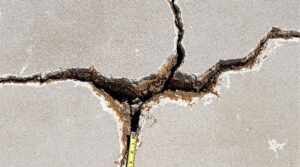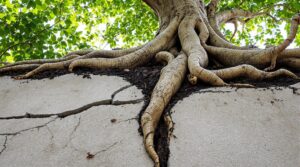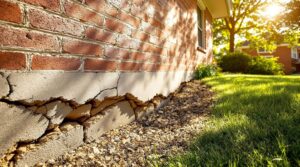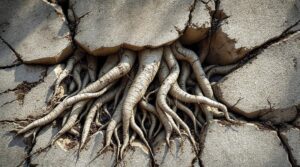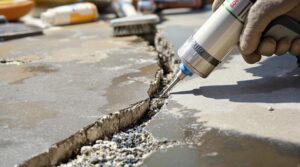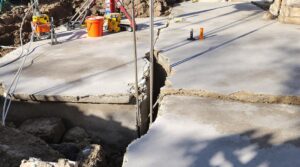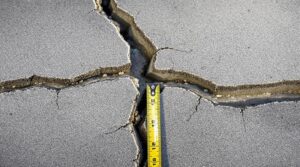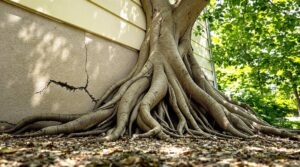Evaluating the risks and benefits of a tree close to a house is essential. Homeowners should inspect the tree's health, structure, and potential hazards, such as decay, cracks, or splits. Consider factors like soil conditions, climate, and nearby construction impacts. A tree can provide aesthetic enhancements, improve air quality, and increase property value. However, removal might be necessary for dying or diseased trees posing risks. Exploring tree care options can reveal suitable solutions for unique property circumstances.
Key Takeaways
- Consider removing a tree close to your house if it's dead, diseased, or poses an immediate risk to safety.
- Healthy trees can increase property value, so removal should be a last resort.
- Trees with signs of decay, cracks, or splits may require removal or pruning to mitigate risks.
- Regular maintenance options like pruning, trimming, and fertilization can help manage risks and preserve tree health.
- Consult a certified arborist to assess tree health and determine the best course of action for trees close to your house.
Assessing the Risks: Is the Tree a Hazard to Your Home?
How can homeowners determine if a nearby tree poses a significant threat to their property?
To assess the risks, a thorough evaluation of the tree's health and structure is necessary. A certified arborist can inspect the tree for signs of decay, cracks, or splits in the trunk, branches, or roots. They can also assess the tree's lean, identifying potential hazards such as dead or broken branches that could fall and cause damage.
Additionally, the arborist will examine the root system, checking for signs of root instability or damage that could compromise the tree's structural integrity. Factors such as soil conditions, climate, and nearby construction can also impact the tree's stability and overall health.
Weighing the Benefits: The Ecological and Aesthetic Value of the Tree
While the potential risks associated with a tree close to a house are a major concern, its benefits should not be overlooked. A tree in close proximity to a residence can provide numerous ecological benefits, including improved air quality, reduced stormwater runoff, and increased biodiversity.
Trees also offer aesthetic enhancements, such as shade, beauty, and a sense of serenity, which can positively impact the mental health and well-being of occupants.
Furthermore, trees can act as a natural sound barrier, reducing noise pollution, and can even increase property values. The presence of a tree can also support local wildlife, providing food, shelter, and habitat for various species.
In addition, trees can mitigate the urban heat island effect, reducing the need for air conditioning and energy consumption. These benefits highlight the importance of considering the ecological and aesthetic value of a tree when deciding whether to cut it down.
Removing a Tree: Understanding the Costs and Logistics
When considering the removal of a tree close to a house, it is vital to understand the associated costs and logistics. The cost of tree removal can vary depending on several factors, including the size and location of the tree, as well as the removal method. Understanding these cost factors can help homeowners make informed decisions.
| Tree Size | Removal Method | Estimated Cost |
|---|---|---|
| Small (less than 20 feet) | Manual removal | $200-$500 |
| Medium (20-40 feet) | Mechanical removal | $500-$1,200 |
| Large (40-60 feet) | Crane-assisted removal | $1,200-$2,500 |
| Extra Large (over 60 feet) | Complex removal | $2,500-$5,000 |
In addition to cost, removal logistics must also be considered. This includes guaranteeing a safe working area, protecting surrounding structures, and disposing of debris. A professional arborist can help navigate these logistics and guarantee a safe and efficient removal process.
Alternatives to Removal: Pruning, Trimming, and Maintenance Options
In cases where removal is not the preferred or necessary option, pruning, trimming, and maintenance can provide a viable alternative for managing a tree close to a house. This approach involves utilizing various pruning techniques to remove branches that pose a risk to the property or are detrimental to the tree's health.
Regular pruning and trimming can help maintain the tree's shape, promote healthy growth, and reduce the risk of damage from overgrown branches.
To guarantee the long-term health and stability of the tree, maintenance options should also be considered. These may include fertilization, pest management, and mulching.
Consulting with a certified arborist can help determine the most effective maintenance strategies for the specific tree species and location. By adopting a proactive approach to tree care, homeowners can mitigate potential risks and enjoy the benefits of having a tree close to their house while preserving its overall tree health.
Making an Informed Decision: Considering Your Property's Unique Circumstances
Considering the diverse range of factors that influence the decision to remove or maintain a tree close to a house, a thorough analysis of the property's unique circumstances is essential. Evaluating the tree's health and potential impact on the property value are critical components of this analysis. A healthy tree with a robust structure can increase the aesthetic appeal of the property, while a dying or diseased tree can negatively impact property value and pose a risk to the surrounding environment.
| Tree Condition | Impact on Property Value | Recommended Course of Action |
|---|---|---|
| Healthy | Positive | Prune/trim to maintain structure |
| Dying/Diseased | Negative | Consider removal |
| Dead | Highly Negative | Remove immediately |
Ultimately, understanding the intricate relationships between tree health, property value, and environmental risks will empower property owners to make informed decisions about tree removal or maintenance, ensuring the best outcome for their unique circumstances. Property owners can benefit from consulting with arborists and environmental experts who can provide insights into the specific tree species present, their potential impact on surrounding structures, and the relevant foundation crack types explained. By recognizing how tree roots interact with soil and foundations, homeowners can mitigate risks and enhance the longevity of their properties. Moreover, proactive tree management not only preserves property value but also contributes positively to the overall aesthetic and ecological health of the area.
Frequently Asked Questions
Can I Cut Down a Tree Close to My House Myself?
Cutting down a tree close to one's house without professional assistance poses significant risks to tree removal safety. Utilizing DIY equipment can exacerbate these risks, increasing the likelihood of property damage and personal injury.
How Long Does It Take to Remove a Large Tree Near a House?
Removing a colossal tree near a house can be a monumental task. Depending on tree removal techniques, a skilled arborist may take several hours to several days, prioritizing tree cutting safety to avoid catastrophic damage.
Do I Need a Permit to Cut Down a Tree on My Property?
Typically, property owners are required to comply with local tree removal regulations. Responsibilities may include obtaining permits prior to removal, ensuring public and environmental safety, and adhering to jurisdiction-specific guidelines governing private property tree maintenance.
Will Removing a Tree Near My House Affect My Property Value?
Studies show that mature trees increase property value by 10-15%. Removing a tree near the house may impact tree aesthetics, potentially decreasing property value and increasing property insurance premiums due to increased exposure to environmental elements.
Can I Sell the Wood From a Tree I Cut Down on My Property?
Individuals can sell the wood from a tree cut down on their property. Tree valuation determines the worth of the wood, and various factors such as species, size, and condition influence wood selling prices.
